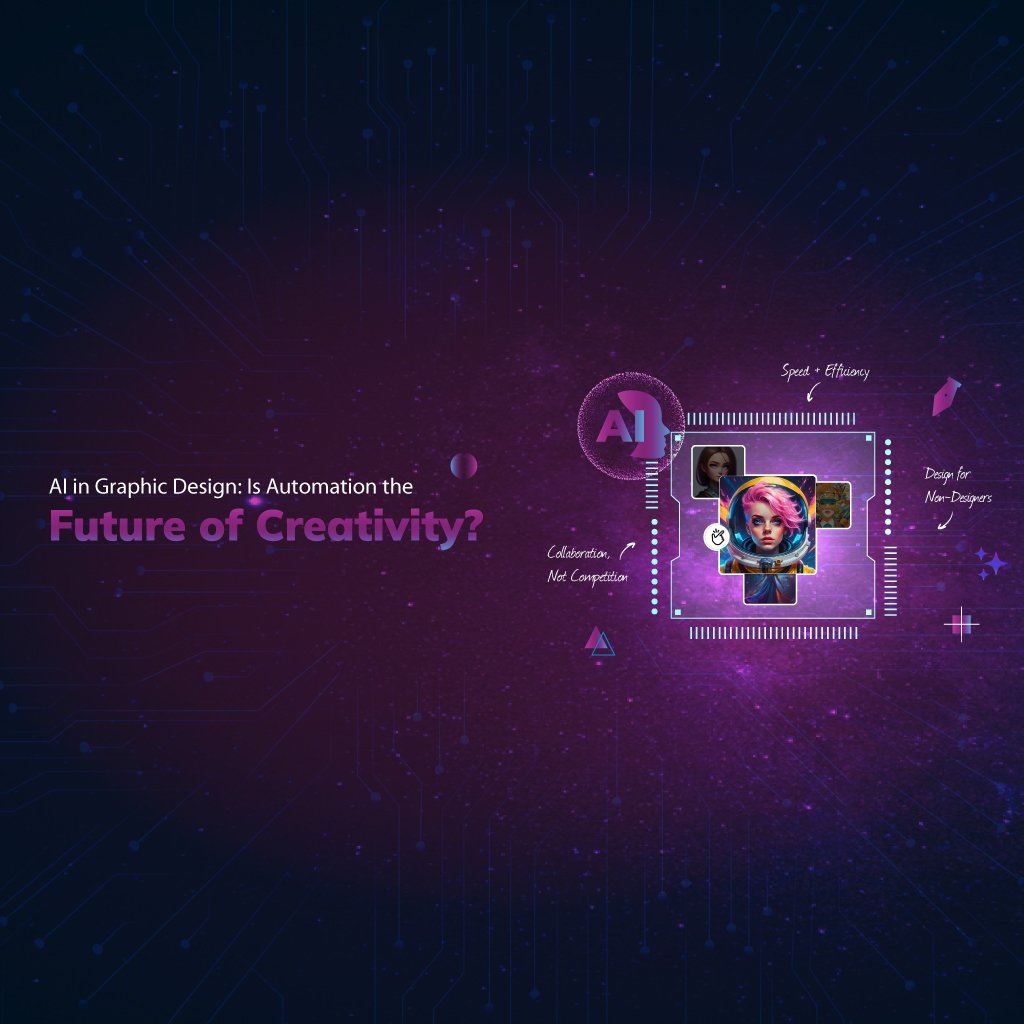
How AI changes the future of graphic design
The creative world is rapidly evolving, and at the heart of this transformation is artificial intelligence. What once required hours of brainstorming, sketching, and tweaking can now be done in minutes. But this raises a key question for creatives and businesses alike: is AI enhancing graphic design, or is it replacing it? Is automation the future of creativity, or its biggest threat?
In this blog, we’ll explore how AI is shaping the future of graphic design, what it means for designers, and how to embrace it without losing the soul of your creativity.
AI in graphic design refers to the use of artificial intelligence tools and algorithms to automate or assist with the design process. These tools can generate layouts, suggest color palettes, remove backgrounds, create logos, and even generate entire visuals from text prompts. Popular AI tools for design include Adobe Firefly, Canva Magic Design, DALL·E, Looka, and Figma AI plugins. These platforms are changing the game — but how?
One of the biggest benefits of AI in graphic design is increased efficiency. AI speeds up the design process dramatically. Tasks that once took hours, like photo editing or layout design, can now be completed in seconds. It also makes design more accessible to non-designers. Startups, marketers, and entrepreneurs can create professional-looking graphics without hiring a designer or using complex software. AI also helps with rapid prototyping and idea generation. If you need fresh ideas, it can instantly generate multiple design variations, helping you brainstorm and iterate faster. Additionally, AI offers significant cost savings for businesses with limited budgets. It’s an affordable alternative for simple, repetitive tasks that don’t require a full-time designer or agency.
But despite all these capabilities, AI has limitations. It lacks emotional intelligence, it doesn’t understand brand storytelling or user intent like a human does. It lacks original vision, as it works from existing data and doesn’t imagine new concepts or break design rules creatively. And it lacks strategic thinking. A human designer understands business goals, target audiences, and how to evoke emotion through design. That’s why the best results happen when AI and human creativity work together, not in competition.
In 2025 and beyond, we’re entering a hybrid design era. Designers are shifting roles, from hands-on execution to art direction, from doing everything manually to curating and refining AI outputs, and from pixel pushers to creative strategists. AI doesn’t eliminate the need for creativity. It amplifies it.
Of course, with great power comes great responsibility. As AI continues to grow, so do concerns around plagiarism and originality. Is AI-generated content truly unique? There are also fears of job displacement. Will AI replace junior designers and freelancers? And with the overuse of templates and automation, there’s a risk of design quality suffering, resulting in bland, generic visuals. Brands need to strike a balance. AI should be used smartly, but authenticity and originality must always remain front and center.
So, is automation the future of creativity? Yes — but not in the way you might think. AI is not here to take over creativity. It’s here to streamline, support, and enhance it. The future of graphic design is human imagination powered by intelligent tools. Designers who learn to work with AI, not against it, will lead the next wave of creative innovation.